
Eric Lamb qualified as a ship’s radio officer from Leith Nautical College in 1961. He sailed with the New Zealand Shipping Company in the 1960s and 70s before returning to Leith Nautical College as a lecturer, where one of his students was LRS member Colin Wright GM4HWO. His Powerpoint talk was most interesting and amusing.
Photos by Peter GM4DTH and Alan GM3PSP.
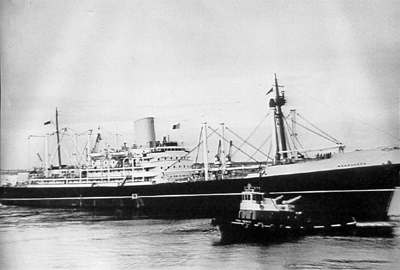
Eric’s first ship was the MV Whangaroa of 8000 tons and 15 knots. It carried 15 (wealthy) passengers. His first trip was to Montreal and then on to Australia and New Zealand. She carried refrigerated and general cargo and Caterpillar trucks, bringing back meat, fruit and cheese. The ship’s radio callsign was GTNQ. The radar was unreliable, going off-tune and requiring Eric to go out into the weather to the equipment box on the deck.
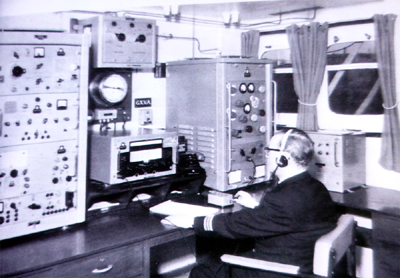
Typical radio room in the early 1960s operating morse code with a Marconi transmitter and receiver. An auto-keying distress sender was provided as well as an emergency transmitter and receiver. At the start of each day the operator would receive the traffic lists from Portishead Radio to find the time of traffic for his ship. Other traffic received included weather reports, navy warnings (loose buoys, naval exercises, ship-towings and oil-rig movements) and the wireless press (news). On the wall is the clock with the “silence periods” marked for listening for distress calls – at 15/18 and 45/48 minutes past each hour on the 500 kHz CW distress frequency. There were also silence periods on the RT distress frequency of 2182 kHz.
Eric’s other duties included all equipment maintenance including the radar, running the ship’s library and being cinema projectionist and mechanic using a Bell & Howell 16 mm projector.
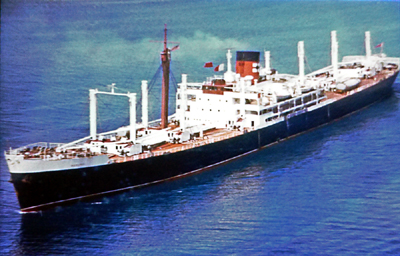
Eric described the various ships that he sailed on – MV Middlesex, MV Hurunui, MV Hirania, MV Westmorland and the MV Providence Bay.
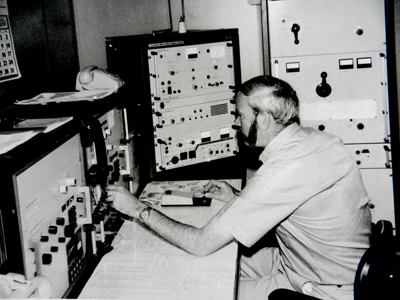
Eric in the shack of his last ship, the MV Providence Day. Equipment changed greatly over the years, from a 100W CW transmitter to a 1 kW SSB tranmitter with Telex and FAX. Latterly the morse key was left on the desk just for show! Today’s ships use GMDSS satellite equipment providing instant worldwide communications. The equipment is compact enough to be located on the ship’s bridge rather than in a dedicated radio “shack” and operators are trained on the largely automatic equipment in a course lasting only 2 weeks.
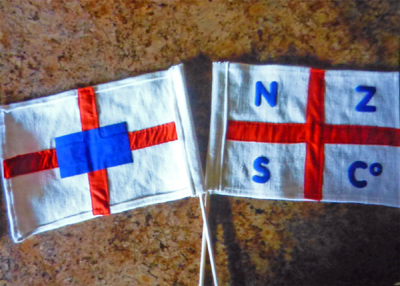
Flags of the New Zealand Shipping Company.
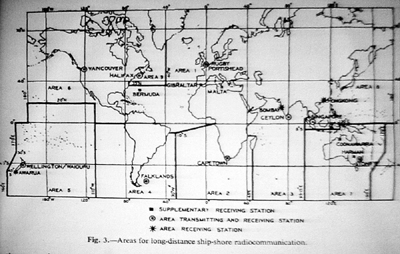
World map showing division into “areas” with shore stations marked, for long-distance forwarding of traffic.
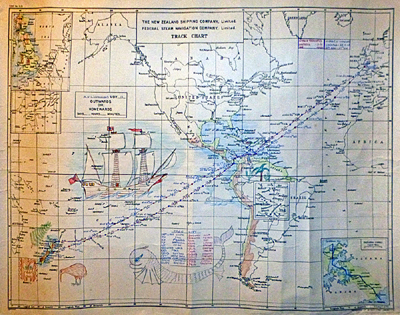
Map of direct trip to Australia and New Zealand via the Panama Canal.
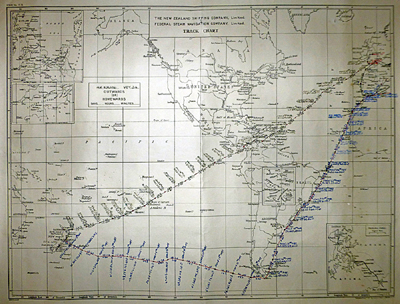
Map of trip with return via the Cape Horn.
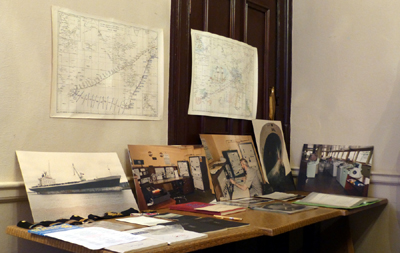
Eric provided a nice display of materials – photographs, radio officers’ epaullettes, telegram forms, books etc.
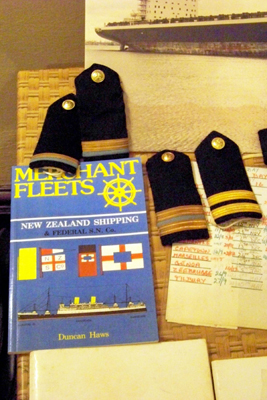
Various epaullettes indicating the rank / seniority of radio officers.
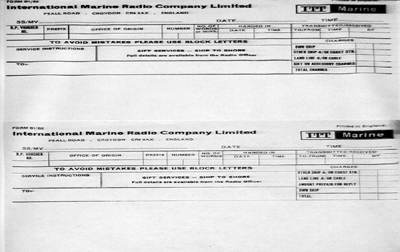
Marine telegram form.
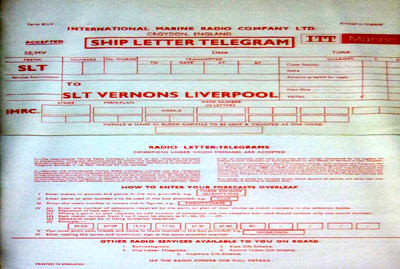
The all-important Vernons football pools form, a very popular activity in the 1960s!
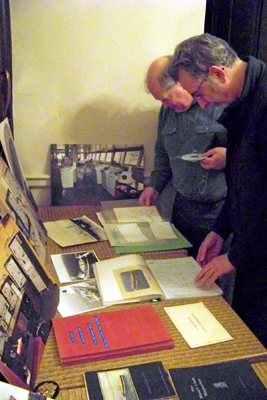
Peter GM4DTH and Melvyn GM4HYR examining Eric’s display after the talk.
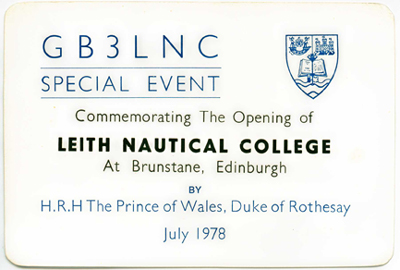
GB3LNC QSL Card provided by Eric Lamb.
Special event station for the opening of the new LNC at Brunstane.
===========================================
Eric Lamb became a Silent Key on 6th January 2021.
Click for Silent Key article by Colin Wright GM4HWO.
============================================
